Introduction
The kitchen sink strainer basket, an often overlooked component, plays a pivotal role in maintaining the efficiency and cleanliness of your kitchen. It serves as the first line of defense against clogs and blockages, saving you from costly repairs and unsightly messes. This comprehensive guide will delve into the world of kitchen sink strainer baskets, exploring their importance, components, various types, and uses. We will also guide you on how to choose the right strainer basket for your kitchen, considering factors like sink material, usage patterns, and ease of cleaning. Lastly, we will walk you through the process of installation and replacement, ensuring you're well-equipped to maintain a smooth-running kitchen sink.
Understanding Kitchen Sink Strainer Baskets
Kitchen sink strainer baskets are essential components in commercial kitchens, playing a crucial role in preventing drain blockage and costly repairs. They catch food, debris, and trash, preventing flooded floors which can cause shutdowns, slip hazards, and health code violations. Strainer baskets come in various sizes and designs, including floor sink baskets and drain strainers, and are made from durable materials like plastic and stainless steel. They feature slotted sides and bottoms for maximum water flow and straining capacity. Some strainer baskets also come with features like multiple finger pulls for easy retrieval and a lock-down system for ultimate drain protection.
Importance of a Good Strainer Basket
A good strainer basket is crucial for maintaining the functionality of your kitchen sink. It screens various forms of debris, such as loose food and packaging, preventing them from entering your drain and causing costly and unsightly clogs, backups, and odors. Woven wire mesh strainers, in particular, offer superior performance. They maximize the screening surface area, allowing water to flow freely for longer periods, even after prolonged debris screening. Moreover, they feature finer pore openings, enabling them to screen smaller particles while maintaining desirable throughput.
Components of a Strainer Basket
A kitchen sink strainer basket is composed of several components. The main part is the basket itself, which catches debris to prevent it from going down the drain. It's held in place by a locknut, tightened with a coupling nut at the base. A rubber gasket and friction ring are placed under the sink to ensure a tight seal. If the basket strainer is leaking, it's often due to a faulty or worn-out gasket or locknut. When replacing the strainer, plumber’s putty is applied around the lip of the drain opening to ensure a watertight seal.
Types of Kitchen Sink Strainer Baskets
Sink strainers are crucial for maintaining an efficient plumbing system, with the sink basket strainer being a popular choice due to its effectiveness and affordability. The choice of sink strainer depends on the drain opening and depth of your sink. End connections, which connect the strainer to the tailpipe, come in flanged and threaded types. Tailpieces, which connect to the bottom of the sink drain fitting, also come in flanged or threaded options. Drain stoppers, which offer various options to plug and unplug your drain setup, come in push-pull, lift-and-turn, sink rod, and rubber types.
Basket Strainers
Basket strainers, also known as bucket strainers, are essential for removing particulates from liquids. They are robust in design and come with removable and cleanable baskets. Basket strainers are cost-effective and ideal for installations where lines can be shut down for short periods for manual cleaning or changing of baskets. For continuous, uninterrupted flow operations, duplex basket strainers are recommended. These strainers allow for easy diversion of flow to a clean unit, enabling filter elements in one strainer to be cleaned while the other continues to function.
Twist and Lock Strainers
Twist and lock strainers are a revolutionary type of strainer for commercial kitchen sinks. They easily install using a high-security insert bit and work seamlessly with existing lever drains. This strainer prevents food clippings and silverware from accumulating in drain lines and grease trap interceptors. It also extends the life of your twist, slide, or lever waste drain by replacing the standard sink strainer included with lever waste drains. Twist and lock strainers lock in place using a patented, high-security mechanism, preventing unwanted removal and protecting your drains from clogs caused by food debris.
Flip Strainers
Flip strainers feature a high-quality strainer and a removable stainless steel cover. The innovative cover opens at the touch of a finger for easy cleaning, and conceals the garbage disposal and waste fittings of your kitchen sink. You can remove the cover from the strainer to clear out food waste. The drain assembly fits into any standard drain opening, and can be used with a bottom grid for maximum functionality.
Choosing the Right Strainer Basket for Your Kitchen
Choosing the right sink strainer is crucial for maintaining an efficient plumbing system. Your choice depends on the drain opening and depth of your sink, with common strainers ranging between 3-½ inches to 4-½-inches in diameter. Sink depths also vary, with standard strainers fitting stainless steel sinks, while thicker cast iron sinks require specific strainers. The end connections, either flanged or threaded, and the type of tailpieces also play a role. Lastly, consider the material of the strainer, such as ABS plastic, brass, or stainless steel, each offering unique advantages.
Consider Your Sink Material and Design
When considering your sink material and design, a versatile choice is a garbage disposal flange that fits both standard stainless steel sinks and extra thick sinks up to 2-inch in thickness. This flange is unique due to its included deep basket strainer that sits inside the flange, preventing damage to your disposal from metal objects or clogging from large food particles. It's compatible with all standard brand disposal units, making it a practical addition to any kitchen sink design.
Evaluate Your Usage Patterns
Your choice of kitchen sink strainer basket can be influenced by your usage patterns. For instance, if you frequently wash large pots and pans, a strainer basket that fits well with a single basin or farmhouse sink might be ideal. If you're more into food prep and need to dispose of food waste easily, a strainer basket compatible with a double basin sink could be more suitable. However, if you rarely wash dishes by hand, a simple strainer basket for a drainboard sink might suffice. Remember, your usage patterns can greatly determine the type of strainer basket that best suits your needs.
Factor in Ease of Cleaning and Maintenance
Cleaning and maintaining a kitchen sink strainer basket can be a simple task. These strainers can be disassembled into three parts: the basket, the post, and the rubber gasket. Soaking the parts in strong bleach water and scrubbing them clean is an effective method. However, metal strainers may require additional polishing with products like cleaning powders or baking soda. Remember, the ease of cleaning and maintenance is a crucial factor to consider when choosing a strainer basket for your kitchen.
Installation and Replacement of Strainer Baskets
Replacing a kitchen sink strainer basket involves a few steps. First, test for a leak by filling the sink with water and checking for moisture under the sink. If a leak is detected, loosen the coupling nut at the base of the strainer basket. Then, unscrew the locknut and remove the old basket. Apply plumber's putty around the lip of the drain opening, press the new strainer into the putty, and reattach the locknut. If the locknut is stuck, you may need to cut it off. Remember to use a high-quality strainer for a reliable and durable finish.
Tools Required
When replacing a kitchen sink strainer basket, you'll need some specific tools. These include slip-joint pliers, a screwdriver, and possibly a spud wrench. You'll also need materials like a new strainer basket, plumber's putty, and a facial tissue for leak detection. If the locknut has corroded in place, you may need penetrating oil to loosen it. In some cases, a hammer and an old chisel might be necessary to tap the locknut. Remember, it's crucial to have a disposable putty knife to scrape off the old putty without scratching the sink.
Step-by-Step Installation Guide
To replace a kitchen sink strainer basket, first test for leaks. If there's a leak, loosen the coupling nut and unscrew the locknut. Remove the old basket and scrape off the old putty. Apply new putty around the drain opening and press the new strainer into it. Add the rubber gasket, friction ring, and locknut under the sink, and retighten the locknut. If the locknut is stuck, you may need to cut it. Once installed, ensure there are no leaks.
Troubleshooting Common Issues
Common issues with kitchen sink strainer baskets can include clogs and blockages, often caused by improper disposal of garbage. Regular maintenance and mindful usage can minimize these problems. For stubborn clogs, a plumbing expert may be required. Leaky faucets, another common issue, can be caused by worn-out washers or broken cartridges. Depending on the type of faucet, solutions may include replacing the seat washer or installing new seals. Lastly, low water pressure can be due to clogged aerators or faulty valves, which may require professional intervention.
Conclusion
In conclusion, the kitchen sink strainer basket is an indispensable tool in maintaining an efficient and clean kitchen. It prevents debris from entering your drain, thereby avoiding costly and unsightly clogs. The choice of strainer depends on various factors, including the drain opening and depth of your sink, your usage patterns, and the material of the strainer. Regular cleaning and maintenance can extend the life of your strainer basket, and when it's time for a replacement, having the right tools and knowledge can make the process a breeze. By understanding the importance and functionality of kitchen sink strainer baskets, you can ensure a smooth, hassle-free kitchen experience.
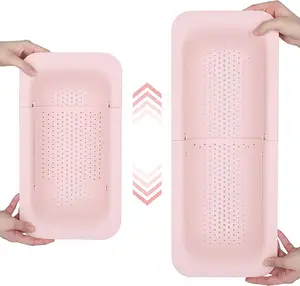



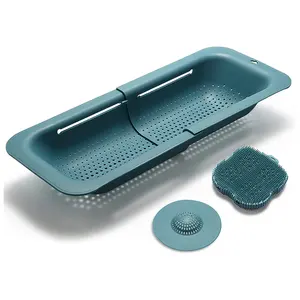

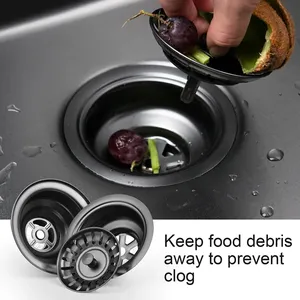





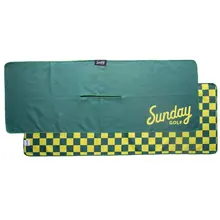
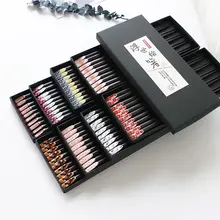




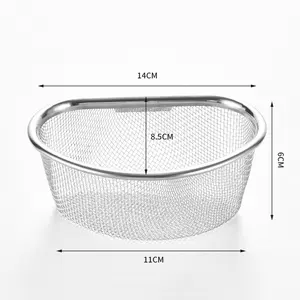























 浙公网安备 33010002000092号
浙公网安备 33010002000092号 浙B2-20120091-4
浙B2-20120091-4